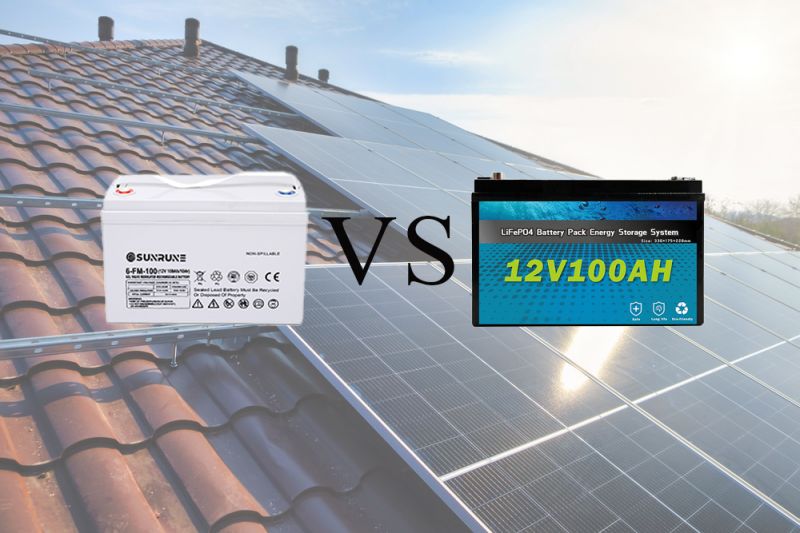Are you planning to install a solar panel syste
m and wondering what type of battery to choose? With the growing demand for renewable energy, choosing the right type of solar battery is critical to maximizing solar power output.
In this article, we will take an in-depth look at solar lithium and gel batteries. We’ll explain the characteristics of each type and how they differ in terms of depth of discharge, battery life, charging time and efficiency, size, and weight.
Understanding Lithium Batteries and Gel Batteries
Choosing the right type of deep-cycle battery is critical when powering home or RV solar systems. Lithium and gel batteries are two common types of solar batteries.
Lithium batteries offer higher energy density and longer life, but tend to be more expensive.
Gel batteries, which can withstand deep discharges without damage, are another good option.
Factors such as cost, capacity, lifespan, and maintenance requirements should be considered when choosing the best battery pack for your needs. By understanding the unique advantages and disadvantages of each type of battery, you can make an informed decision to maximize the efficiency and longevity of your solar power system.
Introduction to Lithium Batteries
Lithium batteries, especially Lithium Iron Phosphate (Lifepo4), are becoming increasingly popular for solar applications due to their high energy density and long life.
These lithium batteries are more expensive up front, but can save money in the long run due to their durability, efficiency, and virtually no maintenance.
They are more flexible than other types of batteries and can be charged and discharged to almost any degree without damage, which is especially useful in situations where the battery needs to be recharged quickly.
Introduction to Gel Battery
Gel batteries have unique characteristics and are the best choice for off-grid solar energy storage. The electrolyte of the gel battery is in gel form, which can prevent leakage and is maintenance-free. Gel batteries have a long life, can withstand deep discharges, and have a low self-discharge rate, making them ideal for solar applications.
In addition, they can operate in harsh temperatures and environments, making them very versatile. Despite these advantages, gel batteries may not be the best choice for high power applications because they have a lower discharge rate than lithium batteries.
Comparison of Lithium and Gel Batteries
1. Depth of Discharge (DoD). The total capacity of the battery that can be used before it needs to be recharged.
Lithium batteries have a much higher DoD, up to 80% or more, and gel batteries have a DoD of about 60%. While a higher DoD can extend the life of a solar system and increase its efficiency, it often comes at a higher initial cost.
Battery Life; Gel batteries can last up to 7 years. Lithium batteries can last up to 15 years.
While lithium batteries have a higher up-front cost, they are ideal for long term use because they last longer.
3. Charging Time and Efficiency
Lithium batteries have a faster charging time and higher efficiency, but have a higher initial cost. In terms of charging time and price, gel batteries are lower than lithium batteries.
Which Battery is Best for Solar Storage?
Choosing the right battery for solar storage is critical. Each type of battery has advantages and disadvantages based on factors such as longevity, discharge cycles, charge time, size, and weight. Lithium batteries are lightweight and long-lasting, while gel batteries are durable but require maintenance. The best battery for your solar system depends on your long-term goals and budget constraints. Carefully consider system size and power requirements before making a decision.
Post time: Sep-14-2023
